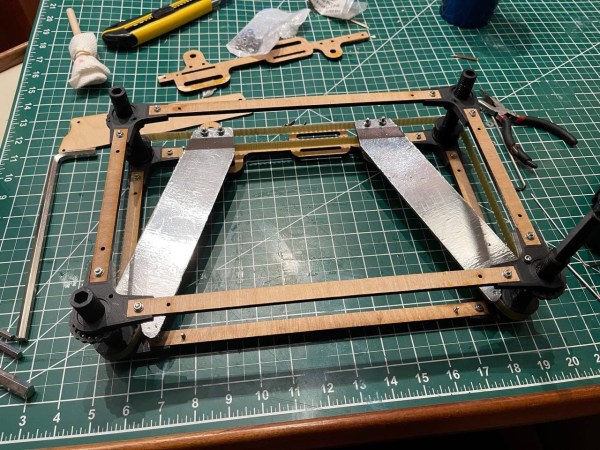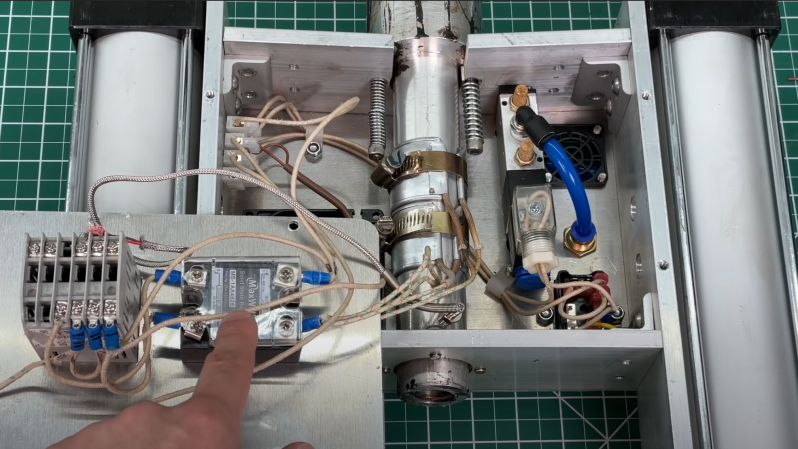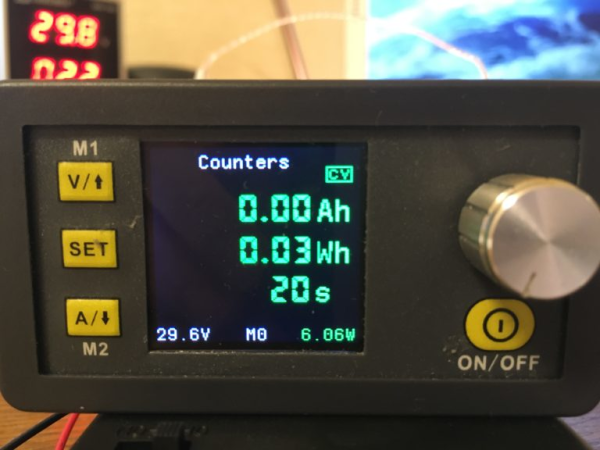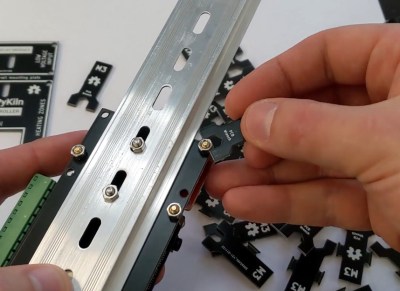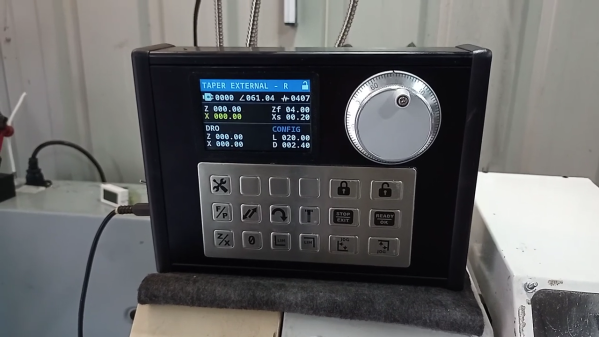We’ve often heard it said that springs come in in all shapes and sizes…except for the one you need. In light of this, the hardware hacker would do well to keep the tools and knowledge required to make a custom spring close at hand when building something that moves. Luckily, all it really take is some stiff metal wire, a rod, and patience.
Unless you’ve got a 3D printer, that is. In which case, we’d suggest you print out this very clever “Spring Factory” designed by [Vincent Baillet]. The simple tool, consisting of just two parts, makes it easier and faster to make consistent DIY springs when compared to traditional methods. Rather than trying to eyeball the spacing of the coil as you wind the wire around the mandrel, this design does it for you.
 As seen in the video, springs made with this tool look very professional. Not only does the threaded mandrel keep the spacing between coils even, it also makes sure all the springs you produce are identical. This can be especially important with projects that need to use multiple matching springs. [Vincent] says his handy tool works with piano wire from 0.8 to 1.2 mm, and slightly thicker if plain steel.
As seen in the video, springs made with this tool look very professional. Not only does the threaded mandrel keep the spacing between coils even, it also makes sure all the springs you produce are identical. This can be especially important with projects that need to use multiple matching springs. [Vincent] says his handy tool works with piano wire from 0.8 to 1.2 mm, and slightly thicker if plain steel.
Of course, the obvious flaw in a tool like this is that it can only be used to make springs of a specific diameter. Changing the length is easy enough, just use more or less wire. But to make a thinner or thicker spring, you’d need a different size of mandrel. It seems that [Vincent] has only released the gadget in this approximately 9 mm diameter so far, but here’s hoping a few more sizes get added to the mix before too long.
Looking for something a bit more advanced? This Arduino-powered wire bender is capable of making some very impressive custom springs, among other things.
Continue reading “3D Printed Jig Makes Custom Springs A Snap”


